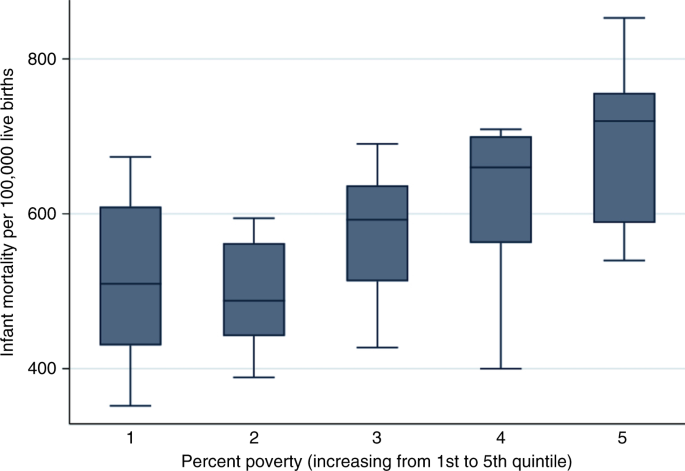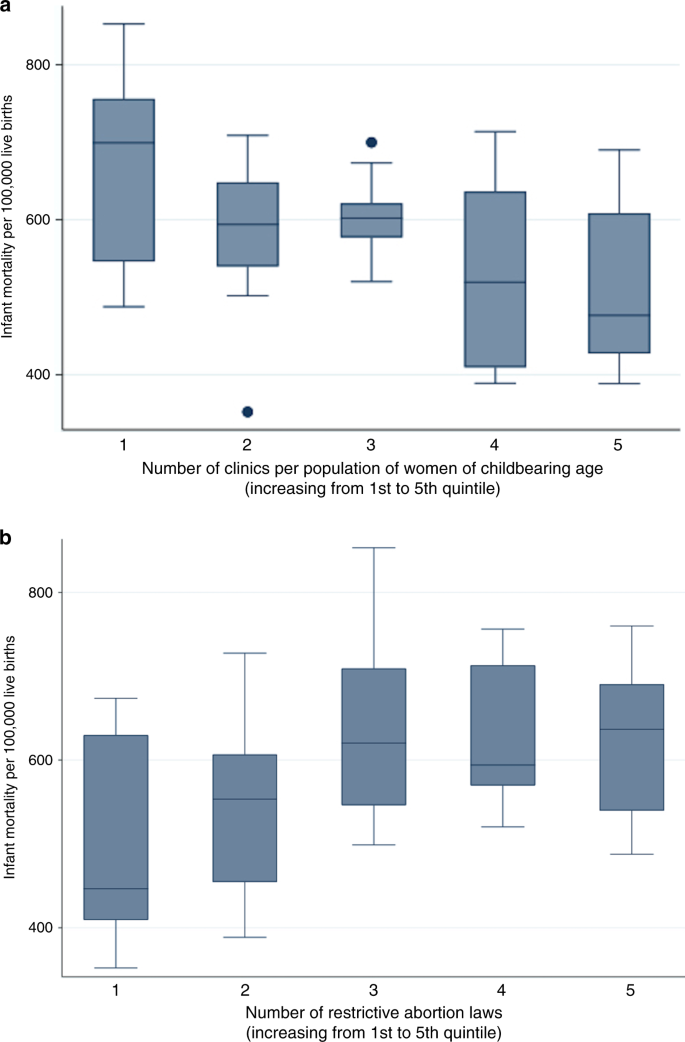
Infant mortality is a vital indicator of the overall health of a society. Judged by this metric, the United States (U.S.) has much room for improvement. Despite the highest health care spending of all industrialized countries, 1 the U.S. ranks first in neonatal and infant as well as maternal mortality compared to the other top 10 high-income countries in the Organisation for Economic Co-operation and Development (OECD). At 4.0 and 5.8 deaths per 1000 live births, the U.S. neonatal and infant mortality rates are 50% higher than the other OECD nations. Even more alarming is the U.S. maternal mortality rate of 26.4 deaths/100,000 live births, over three times more than the OECD average of 8.4. 1
The reasons for these high U.S. neonatal, infant, and maternal mortality rates are complex, intersecting with the social determinants of health including poverty, structural racism, and access to comprehensive reproductive services for women. When examining infant mortality rates and poverty, 2 higher state-level poverty was associated with increasing state-level infant mortality rates (Fig. 1). Infant mortality is likely to be further impacted by decreased access to comprehensive reproductive health care for women, as measured by state-level access to Planned Parenthood Clinics (as a proxy for access to clinics providing comprehensive reproductive health care). Indeed, one of the important but frequently overlooked aspects of restrictive abortion laws is the bystander effect on the availability of comprehensive reproductive services, including essential prenatal care, for women. In fact, decreased access to Planned Parenthood (directly) and strictness of state abortion laws (inversely) are both associated with increasing infant mortality (Fig. 2). Thus, a multi-pronged approach with strategies focused on decreasing poverty, addressing structural racism, and increasing access to comprehensive reproductive services are equally vital interventions to improve infant and maternal mortality rates. Future research is needed to better understand how the social determinants of health, structural racism, and access to comprehensive reproductive health care affect infant and maternal mortality to inform potential interventions.


The health of infants is inextricably linked to the health of mothers. Barriers for women to have access to comprehensive health services, including prenatal care, will have negative effects on infant mortality, especially for women with limited financial means. Unplanned pregnancies are a key mechanism by which women are differentially subjected to poverty conditions, which in turn can lead to higher risk for infant mortality. 3 Women who practice family planning can avoid high-risk births, reducing their chances of having a baby who will die in infancy. Spacing pregnancies also improves maternal and child health. 3 To break the cycle of poverty and infant/maternal mortality, women need reproductive justice with more choices as well as resources to optimize their socioeconomic status (e.g. addressing food and housing insecurity).
On both the federal and state level, there have been challenges to the provision of comprehensive reproductive health services for women. This is in large part because comprehensive reproductive health centers often include abortion services, which have been the target of increasingly restrictive legislation. Whether intentionally or not, restrictive abortion laws also restrict access to reproductive services, including prenatal care. As a result, most of these laws differentially affect low-income women who are less able to access comprehensive reproductive health care. 3
The recent modification in Title X regulations demonstrates how limiting access to abortion also results in limiting access to comprehensive reproductive services. Since 1970, the federal Title X Family Planning Program has supported reproductive health services for men and women, including prenatal care, contraception, sexually transmitted infection treatment, and breast and cervical cancer screenings. On March 4, 2019, the Department of Health and Human Services published regulations prohibiting Title X recipients from providing referrals for abortion care and required them to “maintain physical separation from the provision of abortion.” As a result, major organizations were forced to opt out of Title X, including Planned Parenthood, the largest single provider of Title X services, with over 600 health centers. 4 In 2017, over four million people obtained reproductive services at a Title X-funded clinic, including 38% with public insurance and 42% uninsured. 4 Loss of this funding significantly reduced access to centers providing comprehensive reproductive services and prenatal care, especially for low-income individuals and individuals living in communities of color. In April 2021, a proposal was put forth to reverse this ruling and return funding to centers providing comprehensive reproductive care, and this rule-making process is underway. 5
State-level legislation targeting abortion services is likely to have a similar effect on access to comprehensive reproductive services. In 2020, in a 4–3 decision, the U.S. Supreme Court overturned a Louisiana law requiring abortion providers to obtain “admitting privileges” at a hospital within 30 miles of their clinic. 6 Had the Supreme Court upheld this law, Louisiana would have been left with only one doctor in one clinic in New Orleans able to provide abortions, with an unmeasured effect on comprehensive reproductive care across the state. This Louisiana law was one example of a larger national legislative trend of states seeking to limit access to comprehensive reproductive care by enacting increasingly restrictive abortion laws. 7,8
These laws and mandates essentially strangulate, through abortion-limiting legislation and/or abortion-targeted defunding, clinics where comprehensive reproductive care (including abortion and prenatal care) are offered. Thirty-five states restrict public funds from covering medically necessary abortion, which increases the risk of maternal and infant mortality. Twenty-seven states require waiting periods, usually 24 h, between when a woman receives counseling and when the procedure is performed. Some states require abortions be performed at a hospital after a certain gestational age (e.g second trimester). 8 All of these state regulations and laws differentially affect women of lower socioeconomic status.
Combined, health disparities related to poverty and race, restrictive abortion laws, and limited reproductive health options create a climate of undermining women’s autonomy and health. Limiting women’s access to reproductive choices endangers not only the health of women but the health of their future children—our future society. If we continue to deprioritize, and in fact delegitimize, women’s reproductive choices, infant and maternal mortality rates will remain high in at-risk populations. Strategies focused on addressing poverty, structural racism, and improving access to comprehensive reproductive health care are essential for the U.S. Having a standard living minimum wage, continuing the Child Tax Credit for families, and extending Medicaid coverage until 12 months post-partum in all states, 9 as well as legislation and funding for centers to provide comprehensive reproductive health care are just a few policy examples. More research is also needed to examine both the causes as well as possible solutions to decreasing these disparities in infant and maternal mortality. Without concerted efforts to address and study these issues, there will only be increasing disparities.
Infants are the most vulnerable members of a society and caring for them is a society’s moral responsibility. Nelson Mandela once said, “the true character of society is revealed in how it treats its children.” As our nation continues to contemplate significant legislative and judicial decisions impacting women’s health, we must also consider the impact of these changes on the health and wellbeing of our children.